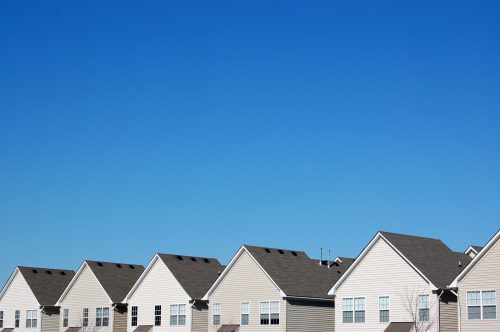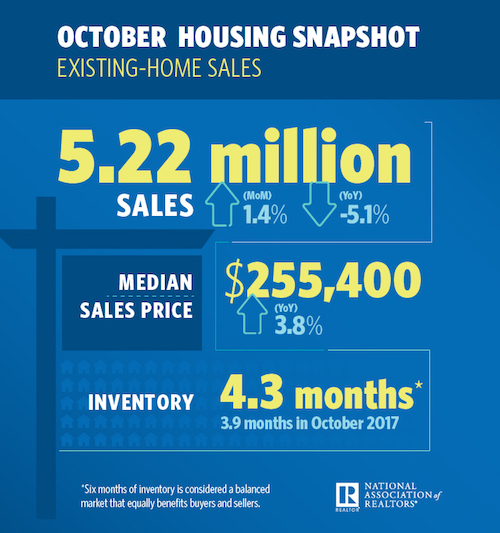After six months of declines, existing home sales posted a month-to-month increase in October, according to the October report from the National Association of Realtors.
Total existing home sales rose 1.4 percent from September to 5.22 million single-family homes, townhomes, condos and co-ops sold in October, but sales are still down 5.1 percent from the 5.5 million sold last October.
“After six consecutive months of decline, buyers are finally stepping back into the housing market,” Lawrence Yun, NAR’s chief economist, said.
Affordability remains an issue, however, as home prices continue to rise across the nation. The median existing home price increased 3.8 percent from last year, rising from $246,000 to $255,400, which is the 80th straight month of year-over-year gains. Additionally, NAR notes in the report, interest rates are up in October compared to September and this time last year.
“Despite this much-welcomed month over month gain, sales are still down from a year ago, a large reason for which is affordability challenges from higher interest rates,” said NAR President John Smaby.
Inventory is also up on an annual basis, from 1.80 million in October 2017 to 1.85 million at the end of October 2018. However, it is down from September’s 1.88 million.
Unsold inventory is currently at a 4.3-month supply, down from 4.4 months in September and up from 3.9 months last year. Additionally, nearly half (46 percent) of homes sold in October were on the market for less than a month with the average home sitting for 33 days — down one day from last October, but up one day from September.
“As more inventory enters the market and we head into the winter season, home price growth has begun to slow more meaningfully,” said Yun. “This allows for much more manageable, less frenzied buying conditions.”
Existing-home sales saw the biggest declines in the South and Northeast, with a 1.9 percent and 1.5 percent increase year-over-year from last year. In contrast, the West and Midwest saw declines with 2.8 percent and 0.8 percent drops, respectively.
“Gains in the Northeast, South and West – a reversal from last month’s steep decline or plateau in all regions – helped overall sales activity rise for the first time since March 2018,” Yun said.


